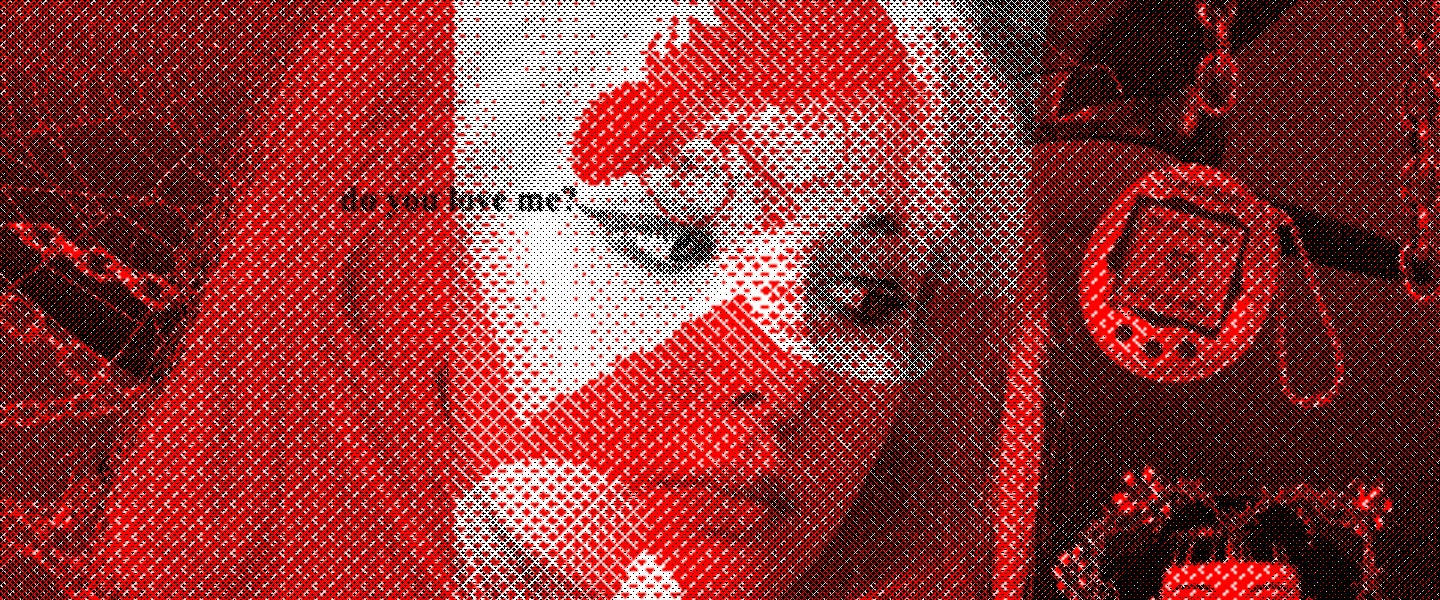Like far too many people, I can’t help checking my phone one last time before bed, usually while brushing my teeth. When I did so on Sunday night, I saw Twitter chatter about a murder that had unfolded that morning on Instagram and Discord, with possible connections to 4chan and an incel subgroup known as “darkcels.” Some 10 hours later, police confirmed that 17-year-old Bianca Devins of Utica, New York, was the victim of a homicide; 21-year-old Brandon Andrew Clark, her alleged killer, was hospitalized in critical condition due to severe injuries.
Confirmed—Utica police indentify East Utica homicide victim is 17-year-old Bianca Devins of Utica. Her alleged killer is 21-year-old Brandon Andrew Clark of Bridgeport. Police say the two met on social media, and had a relationship. Investigation ongoing #WUTR #WFXV pic.twitter.com/pVZhTdodEP
— Ben Dennis (@broadcastben_) July 15, 2019
But that span of hours — the time I spent asleep, plus half a morning of seeking out any confirmed reports of the crime, which was basically just a short notice, with no names, that a homicide in Utica had delayed the start of a local wheelchair race on Sunday — stretched into an eternity online.
Not only had the immediacy of the disturbingly explicit content on Instagram leapfrogged the slow, restrictive chain of information by which we used to learn of such atrocities, but the platform had failed to delete Clark’s posts or shut down his account before the content hosted there spread to dozens of other channels. These images then became grist for a chillingly blasé discussion, on 4chan and elsewhere, as to what had actually happened: Who were these people, and how did they know each other? Had they staged a photo of a young woman with her throat cut open as a prank? Was she even Bianca Devins? Was Clark her ex, a current boyfriend or an aggressive stalker? And to which internet cliques did either party belong?
As different factions battled for control of the narrative, self-promoters flocked to both Clark’s and Devins’ Instagram accounts to advertise, in a bid for new followers, that they were hosting the illicit material on their own pages. A supposed link to video of the murder was said to be a malware ploy. A Twitter search for “Bianca Devins” now autocompletes with “photo” and “video.” On 4chan, users had linked to a photo of Devins’ body or simply posted it right in the thread. Already, it was too late for her death to be anything other than graphically sensationalized.
These are the comments on yesjuliet's latest Instagram photo. People are fucked trying to gain clout of this shit. #ripbianca pic.twitter.com/wOIow0sUfb
— Luciano Malacria (@LucianoMalacria) July 15, 2019
Likewise, even before subsequent articles in Rolling Stone and BuzzFeed News began to disentangle the facts of this story, the lurid tabloids and reckless aggregators had elevated what now appear to be misconceptions: that Devins was “decapitated,” for instance, or that she and Clark were major Instagram personalities. In fact, both had relatively small followings, which made them highly exploitable in the aftermath. Smears about Devins were predictably vicious. People claimed, among other things, that she was a drug addict who sold nudes to support her habit. Several purported screenshots of texts between her and Clark surfaced. One YouTuber started livestreaming praise of Clark with the thumbnail title “INSTAGRAM HERO KILLS THOT CELEBRATION STREAM” and the hashtag #FREEBRANDON, noting that he would move to the streaming platform DLive as soon as he got the boot from “the kikes at google.”
Tonally, this was in keeping with Clark’s trollish attitude throughout his string of horrific updates. When he shared a picture of Devins’ bloodied body on Discord, he added, “Remember to subscribe to PewDiePie,” a meme-slogan referring to a mega-popular Swedish YouTuber that the alleged Christchurch mosque shooter shouted out in the midst of that livestreamed mass killing. This brutal slaying, then, appears destined to take its place in a hyperconnected tapestry of web-fueled violence that encompasses white supremacist terror, misogynist fury, toxic gamer culture and an unshakeable bedrock of “edgy” shitposting protected by a tissue-thin veil of irony that’s often anything but. As journalist Elfy Scott wrote of the “Darkcel Gaming” Facebook group where Clark was apparently an admin (and which Facebook wiped early on Monday), the ideology there was so incoherent as to sound like satire. But even now, a backup “retribution” page is active, with a presumably different admin telling a woman who criticized incels in comments: “There will be no peace in hell for you as our Darkcel Brother Yesjuliet” — this was Brandon Clark’s Instagram handle — “will be there awaiting your arrival.”
They use a lot of WWII imagery and aesthetics in their videos and post a lot of typical gothic nerd symbolism. They discuss the "old thinking" and
the usual run of acting like a sheep in the modern world.— Elfy Scott (@elfy_scott) July 15, 2019
So last night a post appeared on the Facebook page with a selfie of the Admin saying "This may be my final post, they're coming for me and I have done something very very terrible… I am sorry". pic.twitter.com/ejhRxFQJk6
— Elfy Scott (@elfy_scott) July 15, 2019
But maybe in retrospect there were signs of something really wrong happening. The sickening images of Bianca continue to be disseminated over various forums and 4chan and I suppose now it's just a case of waiting for the police reports to understand what really happened here. pic.twitter.com/cxWLjFGoBY
— Elfy Scott (@elfy_scott) July 15, 2019
The blurring of any border that might separate the shock aesthetic of places like 4chan or incel boards from real-world assaults against women and minorities, carried out by men steeped in that same atmosphere, means those of us on the outside are increasingly sensitive to the indoctrinating snowball effect of extremist “jokes” on forums. Meanwhile, the opposite is true for the trolls: They’ll hash out details and images of homicides committed by fellow travelers as if these were just more memes — tokens of an imagined currency instead of the hideous consequences of their casual, all-pervading hate speech. By saturating as many platforms as he could with uploads from the scene of Devins’ death, Clark was making a clear bid for internet infamy, something above the depressingly average tale about a man killing a woman who was unfortunate enough to know and trust him. He aspired, perhaps, to the mantle of Elliot Rodger, an incel who murdered six people in 2014 and went on to an afterlife as a martyr of the movement, inspiring further killings. He wanted an audience, and he wanted to perform.
Their relationship:
-Clark and Devins were intimate on Instagram DMs.
-Their families knew each other.
-The attack took place after the two went to a concert Saturday night.
-Not a stalking incident.He was posting Red Pill theory buzzwords in Discord while being arrested.
— Ryan Broderick (@broderick) July 15, 2019
When we ask why the archetype of the serial killer has faded from public consciousness, we may well look to the trend of murders broadcasted directly to the internet. Rather than gain notoriety through a long campaign of fear and stealthy, signature violence, one may vault to morbid celebrity on the strength of a single, viral attack. This in itself could be inducement to harm someone, as surely as the promise of making headlines in traditional media, and it furthermore creates the room for a killer to shape his reputation from the outset, since he has a considerable head start on the reporters who will have to piece things together later.
This style of mediation also establishes a first-person perspective of the crime that is at once alienating and immersive — to some, it is nauseating to see through a killer’s eyes, and to a certain young, male, radicalizing demographic, it may resemble a video game, nothing more than a simulation. That’s how the Christchurch murderer framed his massacre, as did the man who gunned down TV news correspondent Alison Parker and photojournalist Adam Ward on Facebook Live in 2015, marking an early episode of this trend: watching his footage, the viewer cannot help but feel that they are the one firing the pistol. Years later, Alison’s father, Andy Parker, is still fighting to scrub this video from the internet, beset by trolls who taunt him over her death and conspiracists who say she was a “crisis actor” in a “false flag” shooting. Paradoxically, again and again, it is the direct evidence of violence that prompts armchair skepticism.
Or, among the communities that gave rise to offline terror as a means to online legend, warmly affectionate praise — for another of their ranks has ascended to the shitposters’ pantheon. To kill the “right” victim is, in their eyes, the ultimate commitment to a mostly virtual game.
I usually share with my readers the quotes, screenshots, etc, of what I'm citing. For this story, I chose not to make that stuff public.
It's important to document this behavior happening in these communities, but the stuff is sickening and I can't justify it sharing it.
— Jared Holt (@jaredlholt) July 15, 2019

